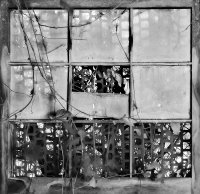Stephen Shore, the well known photographer (and teacher; who, among other things, was the first living photographer to have a one-man show at the Metropolitan Museum of Art in NY) has recently updated his classic meditation on the Nature of Photographs. Recommended to all aspiring (and working) photographers, the beauty of this book is the density of its distilled wisdom.
You will not find anything here on f-stops, film speeds and lenses, nothing on the darkroom (analog or digital), nothing on the raging "debate" whether to pick up an 8 megapixel DSLR or a 10, and no instructions - at least explicit ones - on how to take "better" pictures. What you will find is the crystalline essence of Shore's lifetime's worth of thinking about the nature of the photograph. His short, Zen-like prose-poem musings pierce the proverbial bullseye like an archer's arrow; and leave the reader both enchanted and haunted by their eloquence and wisdom.
Shore reminds us that amidst the infinity of potential images, both real and imagined, the photographer has four - and only four - formal tools for defining a picture's content and organization: vantage point, frame, focus and time. Stop and think about that for a moment. With all the wonderful technology underneath our thumb as we prepare to press the shutter, with all the different ways in which we can image ourselves "taking" a shot, and all the different images that can conceivably exist, the photographer really only has these four fundamental "creative dimensions" with which to work, and no more! Where do I position myself; what do I put in the picture and what do I leave out; where should I focus my attention; and how much of a slice of time do I want to include?
Every picture that has ever been taken, and every photograph yet to be captured - from Adams' shots of Yosemite, to Cartier-Bresson's visual etudes on the "Decisive Moment," to visual realities created by some future technologies - is "reality" as aesthetically transformed by the four-dimensional human creative filter!
Yet somehow, miraculously even, this suffices to provide (however brief) glimpses of an infinite dimensional world of meaning and beauty. That is the magic of photography!



















